Choosing the right headphones is about balancing sound quality, comfort, cost, and portability. The number one reason why people turn away from in-ear earbud headphones is because they don’t like the invasive experience of shoving objects into their ear canal. But you may not want to surrender portability so much as to ear full-sized headphones.
In the middle ground between those two options is where you’ll find ear pad headphones, one of the most common types of highly portable and easy-to-wear headphones. Ear pad headphones tend to have significantly larger drivers than the 8-10 mm drivers you find in earbuds, usually somewhere between 25 and 30 mm. Those larger drivers help support a more detailed range of mid tones, high tones, and bass tones, ensuring you can achieve sound qualities that aren’t possible with some smaller designs.
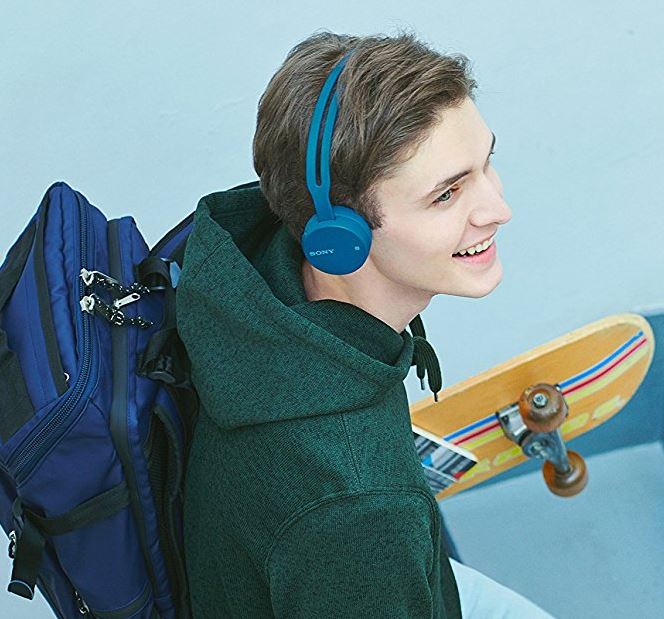
Headphone Comfort
Anytime you’re selecting worn technology, you’re going to want to think about comfort. Sound quality goes without saying, but durability is a factor that might not spring to mind immediately. A quality pair of headphones can last for years, but whether or not your pair makes it past year one depends on the quality of its build.
Bulky headphones can cause strain to your neck, and most people have known the pain of wearing particularly cheap headphones for more than a couple of minutes. The quality of the sound matters little if the device rests uncomfortably on your body, pulls down on you in an awkward way, or is otherwise difficult to control.
As far as comfort goes, ear pad headphones are great for wearing in stretches of about four to six hours at a time. If you’re wearing your headphones literally all day long, then you’ll probably want to try full sized around-ear headphones instead. You’ll get a better bass response than you’ll get out of ear-pad headphones, and you’ll be better equipped for extremely lengthy periods of listening.
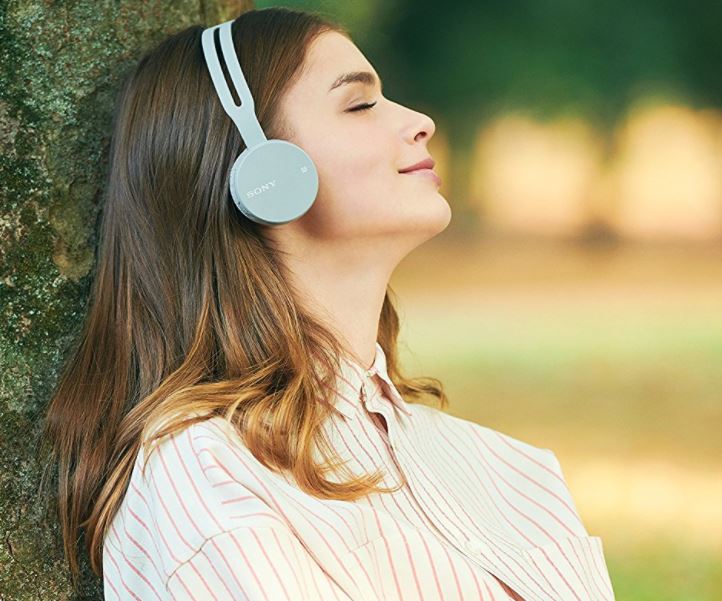
Noise Cancelling
Whether or not you want noise cancelling depends largely on the environments that you’re going to be listening in. People who place a premium on sound quality don’t appreciate that noise-cancelling changes the sound that you’re listening to. Sound cancelling is a lot like the anti-glare protection used on televisions, computer monitors, and similar displays. Anti-glare coating dampens the color of your screen, but without that coating the screen becomes totally impossible to view the moment one errant sunbeam strikes it.
Similarly, sound canceling features affect the sound you’re listening to, but your listening experience may be far worse if you don’t have that protection. For a highly controlled and quiet environment, you’re better off without sound canceling. But for everyone else in all other circumstances, it’s a critical feature to have.
Another factor that plays into sound cancelling is whether or not the headset has an open or closed design. Open-design headphones allow sound to bleed out from your headset into the environment, and force you to hear every noise occurring in your environment. Closed designs block sound from entering your headset, and block your headphone noise from being heard by others. That closed design also helps create a stronger bass response than you’ll generally find in open design headphones.
However, closed designs also produce more ear fatigue and as they provide noise cancelling, they also alter the quality of the sound you’re listening to. If you don’t need noise isolation features, then you don’t want them. But if you need sound isolation features, lacking them can be a deal breaker for whatever headset you consider.
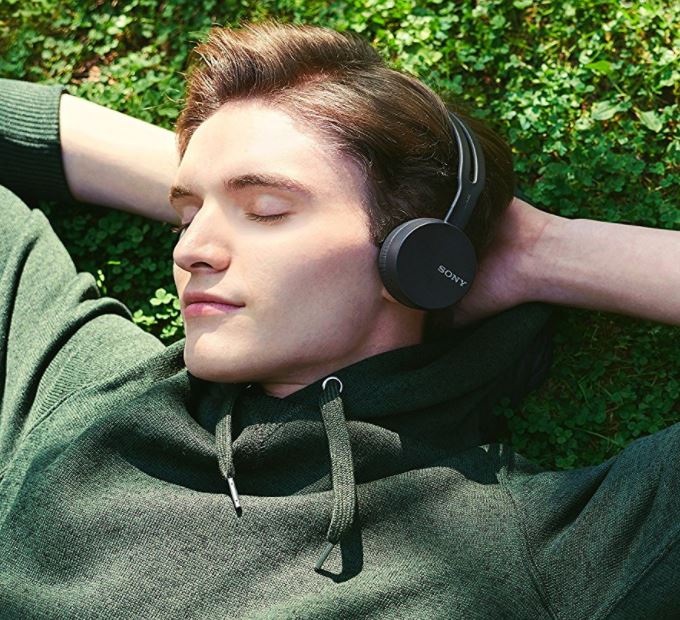
Wired vs. Wireless
Wireless headphones used to have a problem with carrying high quality sound. Older generations of wireless headsets often relied on comparably primitive infrared connections. But modern Bluetooth 4.0 connections can carry far more data with far better range, ensuring you can stay cord-free without damning you to lower quality audio in the process. The only real tradeoff is that you end up dealing with a battery.
In terms of long-term use for headphones, it’s not difficult to say if a battery is better or worse than a wired design. When headsets die and fail, it’s overwhelmingly because during extended use, a short occurred somewhere along their wire. Dead wires probably kill more headsets than all other factors combined.
On the other hand, all batteries have a finite lifespan. After a year of regular use, your typical lithium ion battery will have lost as much as half of its total charge capacity. That means by the third year of use, you’ll probably need to replace any battery-powered headset. But three years of reliable use is far more than you can expect of many wired designs, especially for people who are logging hundreds of hours of regular use.
Manufacturer Specifications
In nearly all cases, reading numbers off of a page won’t tell you if something is going to sound good. Essentially every manufacturer will claim their product spans the full range of human hearing, from 20Hz to 20kHz. However, the qualities of those tones aren’t represented anywhere in that figure. How deep is the bass? Are the mid-tones crisp? The character of the sound provided by a pair of headphones is either something you have to experience for yourself, or seek out in a review.
As one final note, in the interests of portability, high impendence designs are something you’ll want to avoid. Higher impendence is an audiophile feature that will make your headphones louder, but will add hundreds in costs, and greatly detract from portability when you find yourself having to purchase a portable amplifier or digital-to-analogue converter.
Sony WH-CH400 Wireless Headphones
Sony’s WH-CH400 are ear pad headphones built to rest gently on your ears without covering them entirely. And that design helps make the CH400 some of the most comfortable fully-portable headphones on the market. They’re not quite as large as full-sized around-ear headphones, and it’s clear the CH400 are made to compete with earbuds for listening on the go. But for the niche these are intended to fill, it’s hard to find a better pair.
The CH400 have many distinct advantages over earbuds. They make use of exceptionally large 30mm neodymium drivers. They also use a closed dynamic design that will keep your calls private, your music unobtrusive. And for the built-in microphone, Sony made the wise decision of selecting an electret mic, which is the most powerful noise cancelling microphone on the market.
However, ear pad headphones aren’t ideal for blocking sound, so they won’t do a great job of preventing external noise from filtering into your listening experience. Additionally, you can anticipate a fairly large amount of sound will bleed into your environment. If those factors aren’t a concern for you, then you’ll find the CH400 are an extremely comfortable option, and the go-to choice for anyone who wants a portable pair of headphones, but doesn’t want to stick invasive earbuds inside their ears.
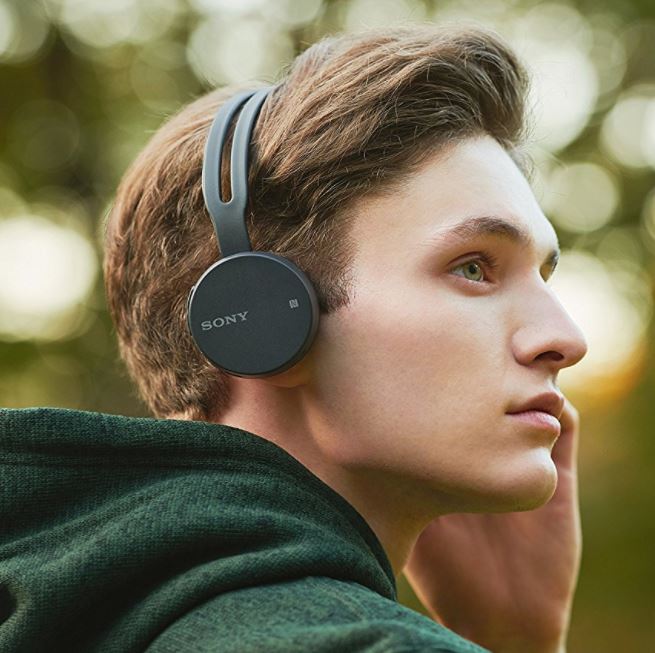
Battery Power
Relative to earbuds, one advantage of using a larger design is you have more space to pack a battery. More space for a battery will almost invariably mean a larger battery, and that’s exactly what you find with the CH400. The included battery supports up to 20-hours of continuous music playback through Bluetooth connections. A full charge takes about 4.5 hours through the included micro-USB cable. And when you’re not listening, there’s 200-hours of standby time. That means with just one charge, you may be good to go for as long as an entire week.
However, it’s worth knowing that these hourly estimates are based on laboratory conditions. With real use, you’ll more than likely find closer to 18 or 19 hours of battery life. Nevertheless, 18 hours is an extremely impressive duration for such a lightweight pair of headphones. The only headphones on the market with longer lasting batteries or quicker charge times will cost you several times as much as Sony’s CH400!
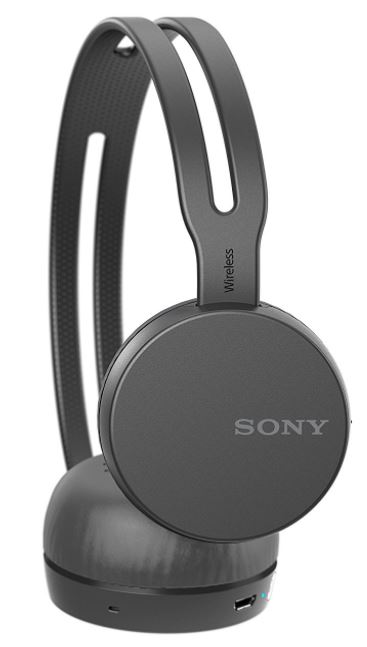
Bluetooth Connectivity
Thanks to Bluetooth 4.0 support and the built-in microphone, the CH400 is extremely effective for hands-free calling. Sony’s latest generation of headphones have almost all used near field communication (NFC) technology, allowing you to setup your Bluetooth connection with one single press of a button. Anyone who’s endured having to create a Bluetooth connection through complicated technical maneuvers will immediately appreciate NFC. And the CH400 is no exception to the rule — just tap the “N” button, and you’ll have an immediate Bluetooth connection.
Sony’s latest generation of headphones also have broad support Bluetooth 4.0 for the most powerful and reliable wireless connections, as well as a reasonably lengthy 30-feet of connectivity. Between Bluetooth 4.0 and NFC, the CH400 is as streamlined and as simple as wireless headphones can be.
Build & Design
Sony’s CH400 makes use of what has become a standard design for Sony. On the power connecting ear cup, you’ll find an independent volume control knob, as well as buttons for play, stop, and skip. For wireless headphones, you’re probably not going to be sitting with touching distance of the devices you’re connecting to most of the time. That being the case, these buttons can be unbelievably convenient when put to regular daily use.
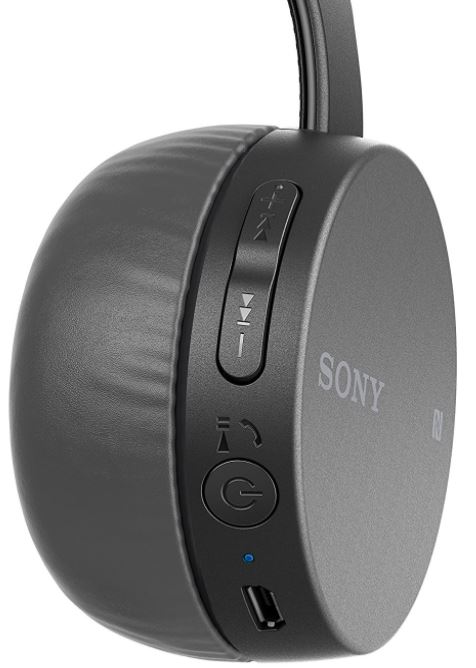
The CH400 use a cordless design that feels virtually weightless when you’re wearing it. And the fully cordless design helps ensure these headphones are ready to last for years to come, all the while helping you enjoy a fully liberated wireless connection. In terms of design, the only real drawback to mention is that the ear cups aren’t made to swivel, which can help in finding a comfortable position on your head. However, it’s hard to hold that against the CH400 because swiveling is generally something you only see in bulkier designs.
If you go digging into the manufacturer’s specifications you’ll find a full 20 Hz to 20,000 Hz frequency range, and 44.1 kHz sampling. But don’t get lost in the numbers – all you really need to know is that you’ve got CD-quality sound available to you here. The sound quality printed on CDs is roughly ten times better than your typical MP3 file, or roughly four times better than the sound quality you’ll find in paid Internet radio services. That means short of audiophile-level equipment, you essentially can’t do better for sound quality than you can with the CH400.
Extras
The only extra feature truly worth your attention is one-button connectivity to your favorite vocal assistant. Whether you’re using Android or iPhone, you just have to hold down the play button for one moment for you to grab the attention of your favorite robot butler, and start asking for directions, making calls, or initiating a new sound track.
Another feature you’re less likely to care about is support for SCMS-T content protection, which allows you to listen to certain types of DRM-protected files. But if you’re not familiar with SCMS-T, then it’s not a feature you need to know about. What you may care about is that the CH400 is available in all of Sony’s standard color options, which includes black, red, blue, and white.
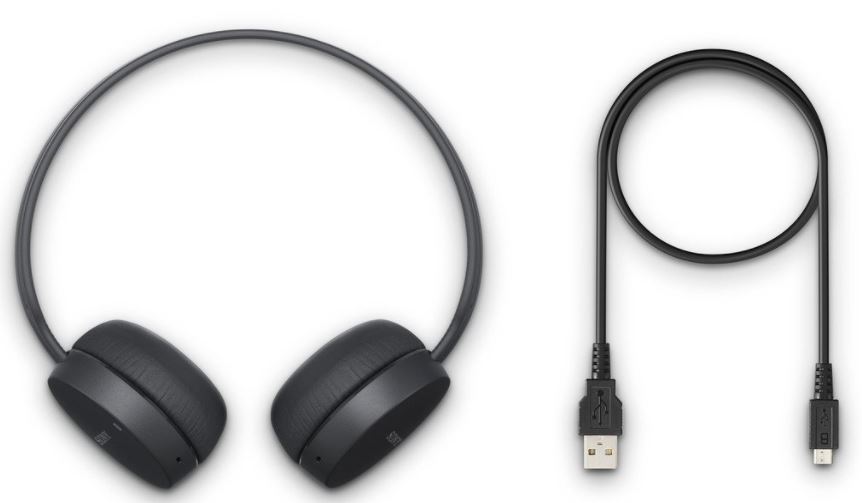
Who Should Choose the WH-CH400?
Some people want headphones that are more portable than full-sized cans, but they don’t want to shove earbuds invasively into their body. Ear pads are the middle ground between those two extremes. And for ear pad headphones, Sony’s WH-CH400 are hard to beat. They’re packed with wireless connectivity features like Bluetooth 4.0, NFC, and a powerful 20-hour battery. But they also don’t overlook a high-quality microphone or the importance of keeping sound quality high.
But ear pad designs aren’t made to be worn all day long. For four or six hours of listening, you probably won’t run into any issues with comfort. If you’re someone who spends all day wearing their headset, you’ll probably want to try an around-ear headset instead. But if you’re going through more average listening periods or you otherwise take listening breaks, Sony’s WH-CH400 is an excellent choice.
Meet Ry, “TechGuru,” a 36-year-old technology enthusiast with a deep passion for tech innovations. With extensive experience, he specializes in gaming hardware and software, and has expertise in gadgets, custom PCs, and audio.
Besides writing about tech and reviewing new products, he enjoys traveling, hiking, and photography. Committed to keeping up with the latest industry trends, he aims to guide readers in making informed tech decisions.


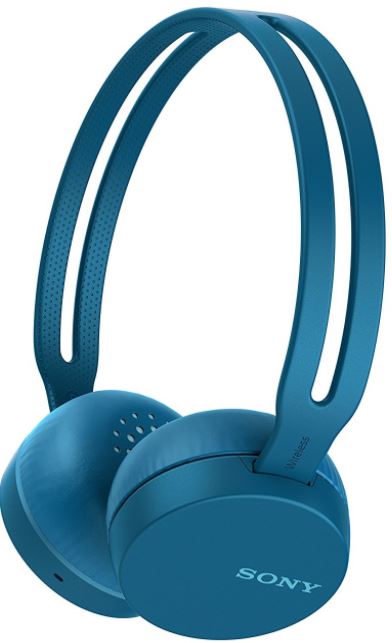
Can these be used in Sony Smart TV’s as well ?
I’m wanting something so two people can listen to t v with two headphones Can you do that with these, or if not any suggestions. Thanks